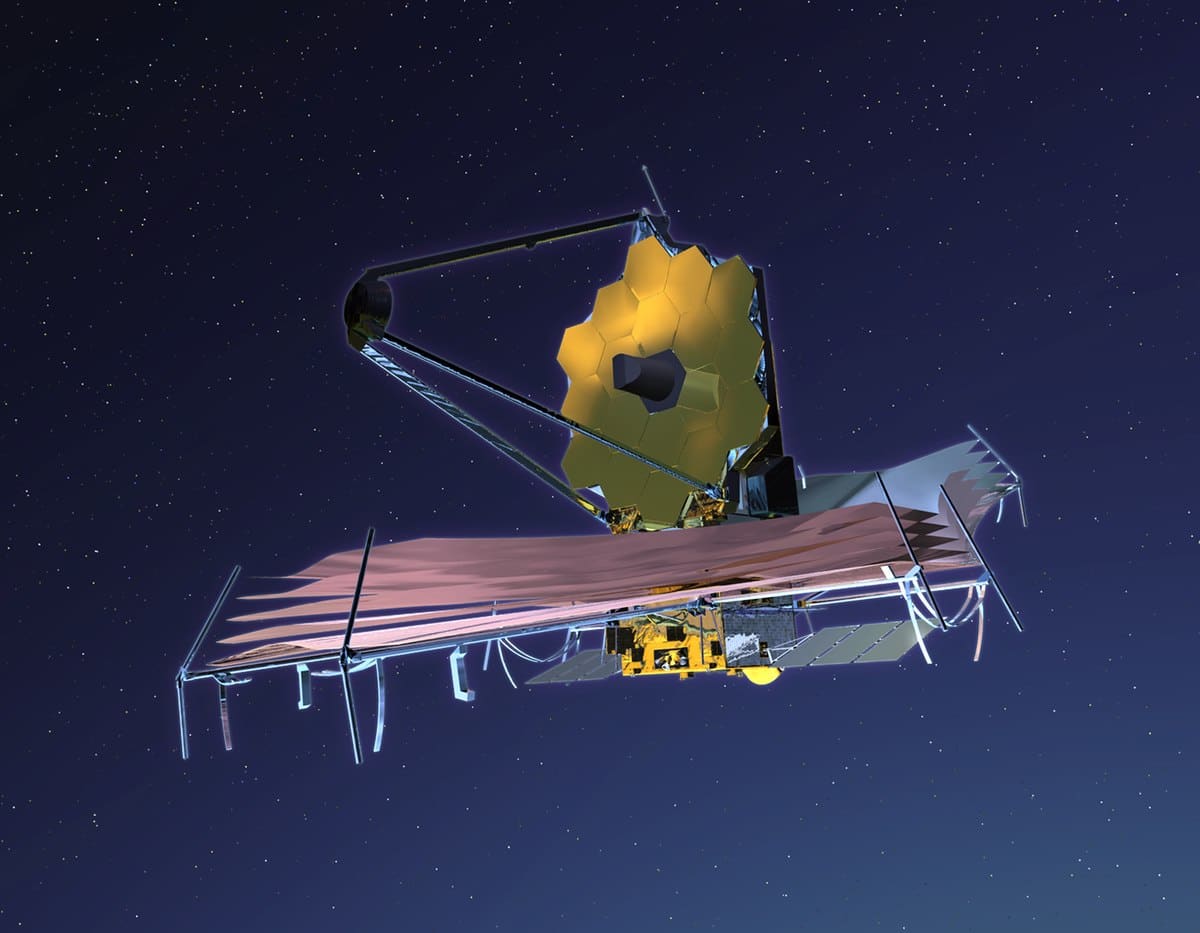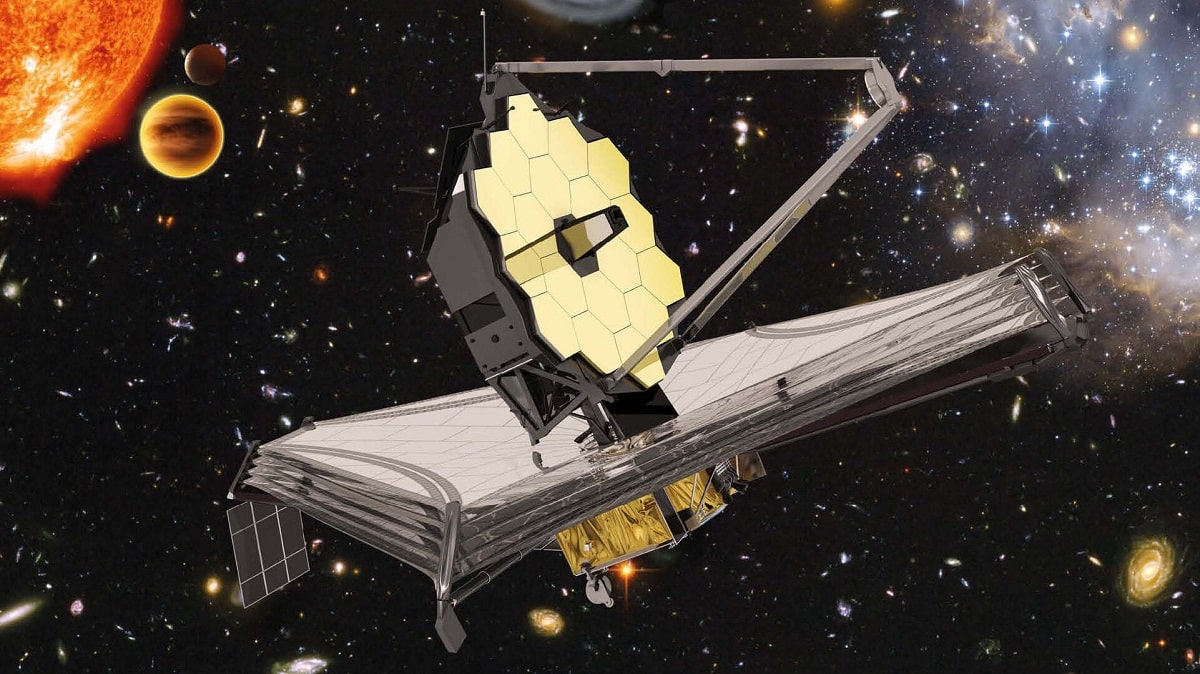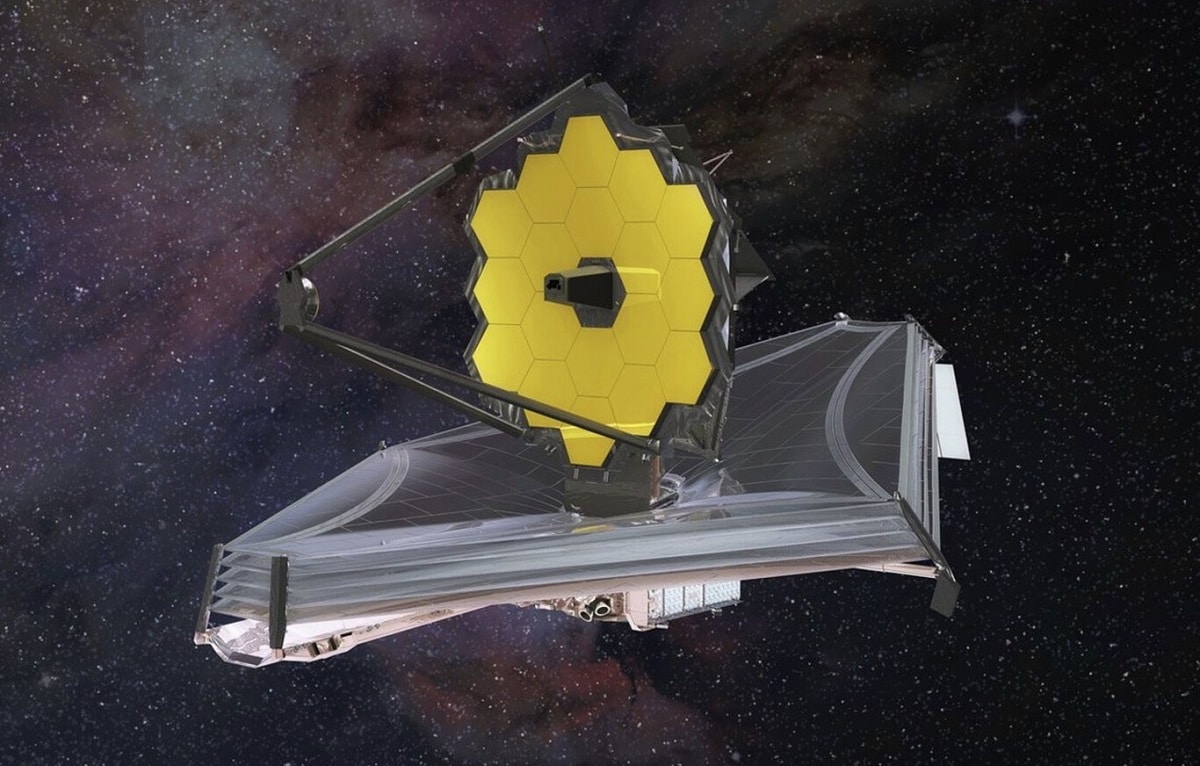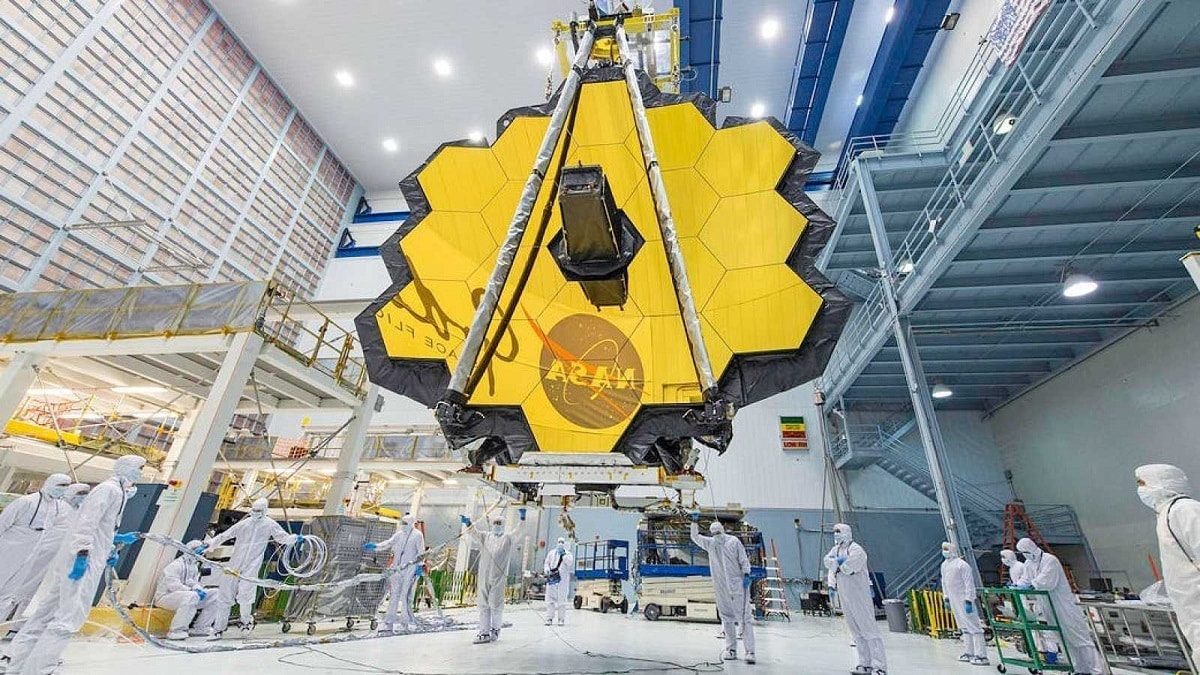
The study of the universe in the solar system advances every day at a faster rate. One of the most recent scientific advances is the creation of the james webb space telescope. James Webb is a space telescope that operates in the visible, near-infrared, and mid-infrared light spectrum. It has a mirror with a diameter of 6,6 meters and consists of eighteen hexagonal sections. The telescope is optimized as an infrared observatory.
In this article we are going to tell you everything you need to know about the James Webb Space Telescope, its characteristics and the contributions it has made to science.
Key features

Because the Earth's atmosphere absorbs infrared radiation, in order to observe it, telescopes like the James Webb, which can observe undisturbed in the infrared, are the largest and most accurate telescopes ever launched into space. On the one hand, it was designed to be able to observe astronomical objects with unprecedented precision. It is able to infer how the first galaxies, the birth of stars and the atmospheres of exoplanets, to know if the conditions for life are possible.
On the other hand, what makes this telescope special is that, due to its size, to be sent into space it must be able to fold up on the tip of a rocket. Once in space, when folded, it should be able to open on its own while travel to a workplace 1,5 million kilometers from Earth. Among the challenges of its technological development, it must be able to isolate itself from heat and light, and be passively cooled or require no energy.
What type of telescope is the James Webb?
It is a James Webb Space Telescope operates in the infrared below visible light. It is capable of intercepting light invisible to the human eye, but if detected with the proper instrumentation, it could help study cold astronomical objects, such as young planets.
It is also a type of radiation that can travel through stardust, something that visible light cannot. This feature makes it possible to study objects such as brown dwarfs and protostars, which are born or may be surrounded by stardust, which makes observations difficult. On the other hand, the infrared light intercepted by this telescope may be the echoes of the first formations of galaxies, in the form of light elongated by the expansion of the universe, tending to red. For this reason, the James Webb Space Telescope is sometimes referred to as a telescope that can travel through time.
How does the James Webb Space Telescope move?

James Webb is in line with the Earth, moving around the sun, but not stopping. It orbits our star once a year, an ellipse every five months, and thanks to its kapton visor, its mirrors and instrument modules remain isolated from sunlight and heat at all times. The gravitational equilibrium point, the Lagrangian point 2, It is 1,5 million kilometers from our planet, where it needs very little extra energy to move.
This energy saving allows it to use the energy it captures through its solar panels to apply the commands sent to it from Earth and send the data it observes to our planet. Sending commands from Earth to set observing modes or another person using scientific instruments may need 30 minutes to travel 1,5 million kilometers between the telescope and the radio antenna that transmits and receives CSIC CAB-INTA-CSIC data.
How much does the James Webb Space Telescope cost?

According to NASA, "the cost to build, launch and run the observatory is $8,8 billion. Five years of operation will cost $860 million, which translates to an estimated total life cycle cost of $9,66 billion." However, it was also added that the telescope is not expected to be limited to five years of operation, but can run high-level science with enough consumables for about 10 years.
The telescope has been able to capture stretched infrared light from objects as far away as 13.500 billion light-years, when the first galaxies formed. The James Webb is located at Lagrangian point 2, the point of gravitational equilibrium that coincides with the Earth.
this telescope is operated by the Space Telescope Science Institute in Baltimore, USA. Scientists on the ground contacted James Webb through radio antennas in Goldstone (USA), Madrid and Canberra (Australia), depending on which is closer to the telescope, depending on the time of day and the position of the Earth. The telescope receives data through its communication antenna, and once it completes the command(s) sent to it from STScI, it also transmits its own data from there.
Scientists from around the world can submit their research projects to access data for scientific research. In the first phase, the STScI team carried out five months of preliminary observations, making the data available to any amateur and professional astronomer. Then there is a phase of guaranteed time for those involved in the telescope design process, and finally observation time open to projects that are already competing, that is, those who will spend 80 percent of their time observing Webb.
These projects must be submitted anonymously and without reference to previous work so that they can be selected based on their merits and without prejudice of gender, nationality or academic experience.
Who invented the James Webb Space Telescope?
In 1988, NASA Administrator Riccardo Giaconi set out the challenge of building a telescope with the capabilities of James Webb before launching the Hubble Space Telescope. The challenges of building this telescope, the first Next Generation Space Telescope, NGTS, for short NGTS, they were first exhibited in 1989 at a scientific conference in the United States.
This is not an individual invention, but a team effort, changing as it evolves and bringing together collaborations from around the world under the umbrella of the European Space Agency (ESA), the Canadian Space Agency (CSA) and the consortium of partners. of industry and scientists.
I hope that with this information you can learn more about the James Webb Space Telescope and its features.
EXCELLENT! - RICHARD
WHY THE SECTIONS WITH HEXAGONALS — SORRY THANKS — RICARDO